As a talented painter, musician, and writer, Kelly Reaves has traversed a variety of creative fringe microcosms since arriving in Chicago from Florida in the early 2000s. In her portrayal of moments of intense ecstasy to an intimate embrace there has been a consistent adept fluidity in her painting style. In the past year, Reaves has been examining her life (and a loss) via a series of spontaneous works that are simultaneously exorcising demons while extending her studio practice. This week The COMP Magazine visited Reaves at her East Garfield Park studio to discuss her early introduction to oil painting, how various persons and events have provided new platforms for thinking about the art making process, her recent series: Dream Demon, and what she values most in her aesthetic inquiry.
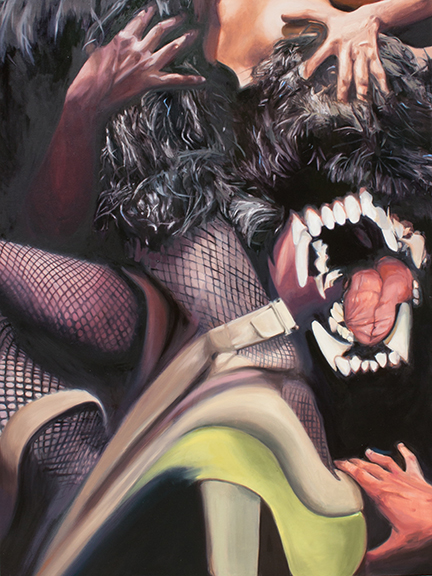
You are originally from the St. Petersburg area in Florida. In conversation you noted you began painting with oils at a relatively young age, I believe, when you were 14. Can we rewind and discuss your early introduction to the visual arts. Were there any specific people or events that you see informing your present-day life path?
I was always interested in drawing and painting so I went to a magnet art high school, Pinellas County Center for the Arts, at Gibbs High School. I also saw an after-school painting tutor named Carolann Mancuso, so I was getting about 20-24 hours a week of fairly traditional painting instruction in during my high school years. Carolann was also my dealer and she sold my paintings to local collectors. I was kind of considered one of those “small pond” prodigies by my family and some teachers.
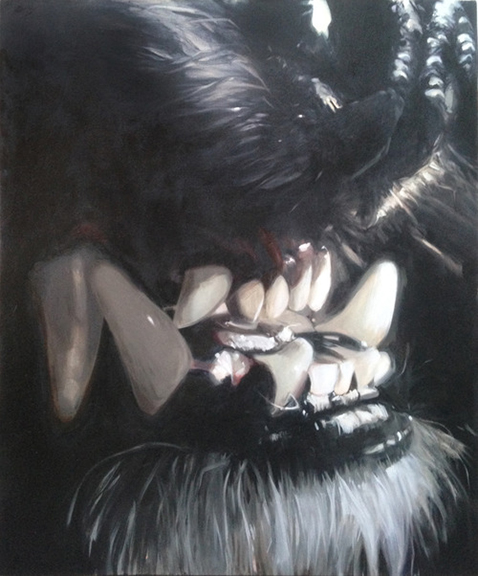
I came to Chicago to study studio art at SAIC but conceptualism got me a little hung up for a while. I’ve since used what I learned there – I’m still using that knowledge – but maybe I was too young for it at the time? Anyway after a little detour into arts journalism and running a gallery, Peanut Gallery, for a few years, I eventually found my path toward creating again. My shift into abstraction happened right around the time Trump was elected, in 2016. I’m not sure the two are related except to say that that event kind of turned my perspective of the world on its side. Right around that time I was also presented with the opportunity via Dan Devening, who I’d been studio-assisting as a side gig, to make some small drawings for the Ace Hotel. I was given letter-size paper to work on and I chose to embrace that limitation and one-up it by only using black india ink. The challenge of making drawings as texturally varied as possible using only one medium was super fun, so I ran with it, and kept running with it. So here we are now — still running on that spark, although now I use practically every 2D medium I can get my hands on. I gradually worked my way back up and I’m just now starting to incorporate oil paint into my work again.
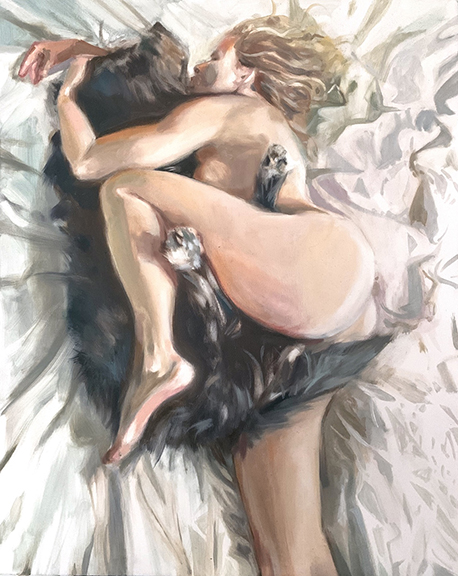
Your work has navigated various visual genres. You’ve worked in a figurative manner where symbolism and a referencing to popular images (e.g., Yoko, 2016) have been central to seemingly abstract pictures that appear almost nods to Japanese body horror? Simply put, there’s so much going on visually and metaphorically in your paintings. Can you share with us how you see your work evolving?
Jeez, that’s kind of a mystery to me to be honest. The imagery is formed kind of like a Rorschach test in that I usually start by making a puddle or a squiggly like or some sort of mess and then pull what I see from it. It’s heavily layered. Lots and lots of editing with white paint. And I work excruciatingly slowly. But any imagery that makes its way into a painting is basically subconscious. Which means it’s obviously informed by the images and subjects I’m interested in, like science and nature – especially bugs and bones… fleshy things… sex. Just not planned. My process is very meditative and sometimes it’s interesting to see what pops up. Usually, it’s not, and it gets whited out or covered up.
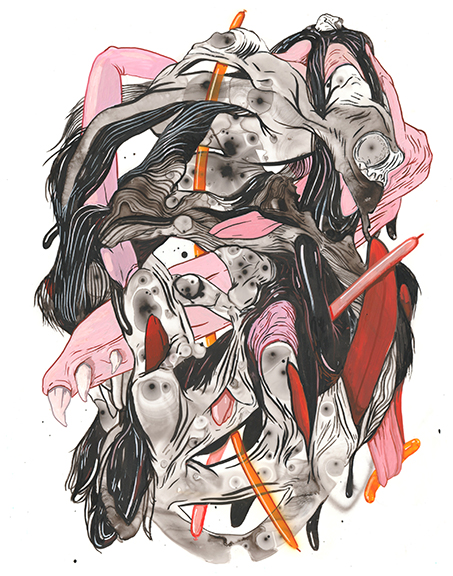
14 x 11 inches, 2021
That said, Yoko was from a series of what I called “post modern dog portraits” of my dog Rodney, whose death I was terrified of and therefore obsessed with. I thought if I made enough paintings of him maybe his death wouldn’t hurt so bad. (More on that below) Those paintings were from about 2013-2016. My last gasp of super planned, representational painting.
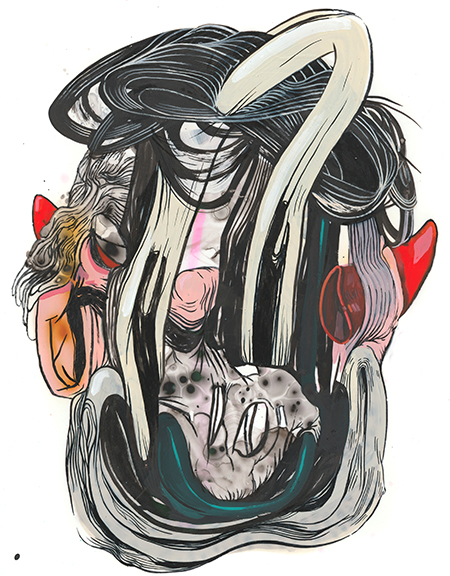
In addition to making paintings, you have written seriously on artists like Sherwin Ovid, Celeste Rapone, Jenn Smith, and others. Has writing about other artist’s practices have any impact on how you think about and make paintings?
I’m not sure it does. I just wrote about art that appealed to me because it was fun to dig deeper. And looking that hard and thinking that hard about art I admired definitely informed my practice and aesthetic, just not in a super direct way. I’m inspired by so many other artists and grateful to live in the world with their work.
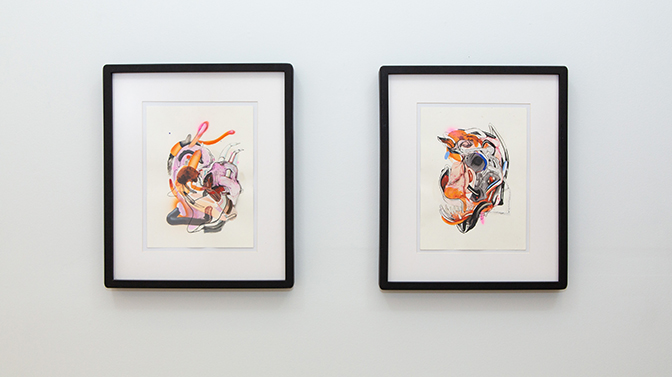
You mentioned that much of the recent work was made while traveling. Can you walk us through your conceptual and tactile process?
I carry my “studio” in a tote bag, which these days is a small pad of yupo and/or watercolor paper, some india ink and liner brushes (and brush pens for when I’m *really* “on the go”), and sometimes a couple pencils and tubes of gouache. I like to work outside whenever the weather permits – find the closest park or creek or whatever – and just settle in, zone out and doodle. If I’ve had a lot of time to draw and I’m loosened up, it can go really well and be really fun. But most of the time it’s a struggle. I have a demanding work schedule so I don’t have time to draw as much as I’d like and the less I draw, the worse I am at it. But I never give up on a drawing. I’ll work on the same 7 x 5 inch drawing for months until I’m happy with it. Then, lately, I’ve been taking my favorite drawings and making larger paintings (at my home studio) with the drawings as a jumping off point, compositionally. Conceptually, I’m just working out my inner demons. The point, for me, is to feel better. It’s therapeutic, There’s no better feeling to me than figuring out a drawing, especially one that’s clumsily creaking along for a while with no end in sight. But it’s all just based on intuition.
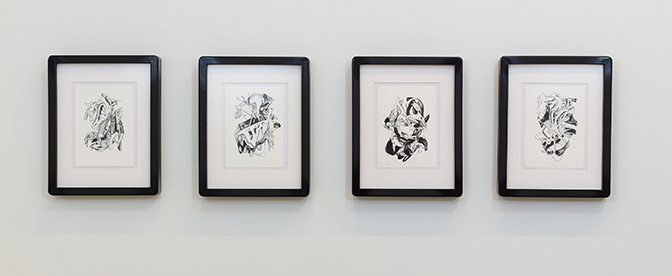
You currently are presenting Dream Demon at Cleaner Gallery & Projects. In this exhibition what are some of the ideas you were examining? Do you see this exhibition a prompt for further examination?
All the work in Dream Demon was made in a one-year period (Jan 2022-Jan 2023). I’ve experienced a handful of traumatic events in the past couple years, starting with the pandemic and a near-death experience when my appendix ruptured and I went into sepsis and culminating in the death of my 14 year old dog, Rodney, in February 2022. He was the first dog I had as an adult. I got him when I was 22 years old. I don’t have kids — I considered him like a son. He was a very unusual, human-like dog who only liked me and only cared about protecting me. He and I felt like one entity to me, and when he died, a part of me died. All this to say that my personal circumstances combined with larger, global and political circumstances have me in a dark head space. And drawing is my way of not… losing control, I guess. Not going into a long depressive slump, etc….I’m “Exorcising Demons”. Or something.
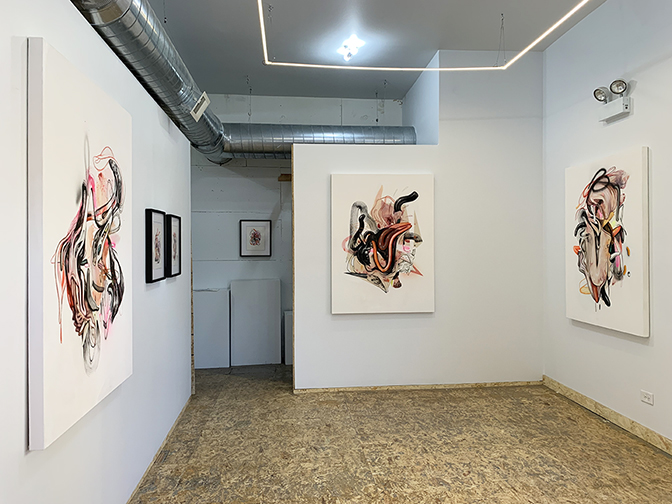
What do you value most in your aesthetic investigations?
I’m just searching for shapes and textures that feel satisfying. Bonus points if the image/composition expresses a complex mood. Bonus points if they make you feel funny. And I usually think of them as “portrait-adjacent”. It’s more fun for me when I can find a face or part of a face in the mess. Then I can pretend like the painting is a literal demon that I exorcised.
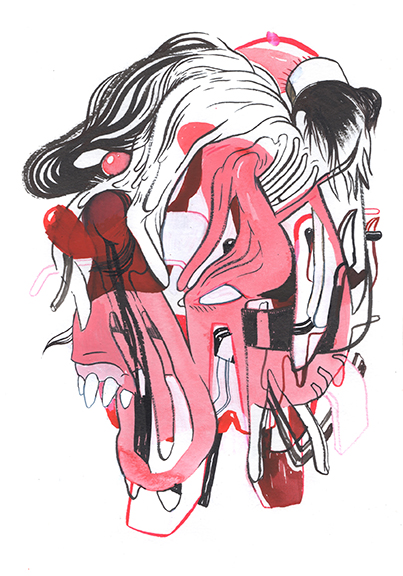
8 x 6 inches, 2021
With the show at Cleaner Gallery & Project wrapping up in early March, what’s up next for 2023? Do you have specific projects in the works? Any new ideas or items you hope to explore in the spring?
My only goal at the moment is to make some more paintings that push further into illusory space. “Dream Demon” kept a strict “floating-blob-in-white-void” visual format but I’d like to expand beyond those parameters in some new work. And I want to play it a little faster and looser — make some studies — see how moody I can get. How gross, sad, sexy, etc., I can get, without getting too literal.
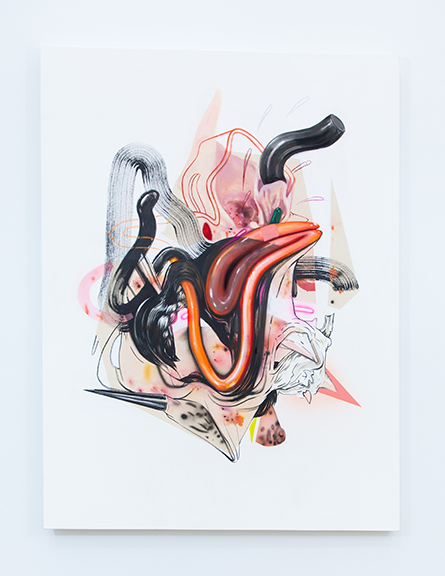
For additional information on the aesthetic investigations of Kelly Reaves, please visit:
Kelly Reaves – https://kellyreaves.com/home.html
Cleaner Gallery & Projects – https://www.cleanergallery.com/
Chicago Artist Writers – https://chicagoartistwriters.com/contributor/kelly-reaves/
Sixty Inches From Center – https://sixtyinchesfromcenter.org/torrential-hag-at-cleaner-gallery-projects/
Kelly Reaves Instagram – https://www.instagram.com/9_inch_snails/?hl=en
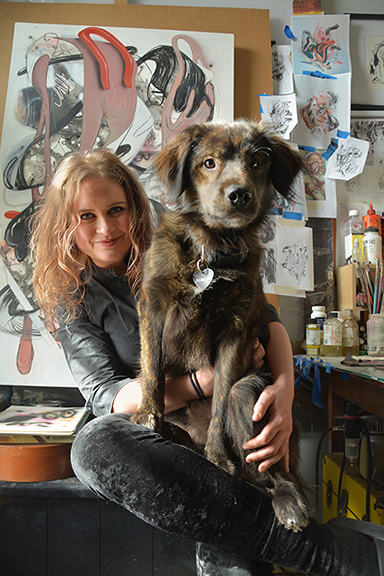
Artist portrait and writing by Chester Alamo-Costello


